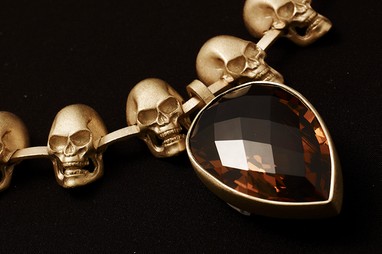Jewelry stones - generally
Jewelry stones - Nowadays the use of synthetic jewelry materials is getting more and more common. However, jewelry crafters tend to respect traditional manufacturing techniques, including hand manufacturing techniques and traditional materials, primarily precious metals: gold, platinum, silver and precious stones.

Jewelry stones - Nowadays the use of synthetic jewelry materials is getting more and more common. However, jewelry crafters tend to respect traditional manufacturing techniques, including hand manufacturing techniques and traditional materials, primarily precious metals: gold, platinum, silver and precious stones. The term "Gemstones" refers to a broader category of stones - by definition gemstones can be both natural and synthetic (usually cut) and are used in making of jewelry products.
This definition of gemstones is consistent with international assignation, contained in the "Guidelines for precious stones, ornamental pearls and corals" (RAL 560 A5 z 1963 r. i RAL 560 A5E z 1970 r.).
Precious stones - a characteristic feature of these stones is considerable hardness - over 7 on the Mohs scale. Mohs scale of ten-(created in 1812) determines the hardness of the minerals by comparison. Minerals are arranged on a scale from softest to the hardest. Positioning on the scale is based on the minerals ability to scratch - minerals with a higher degree of hardness can be scratched by minerals of lower hardness, at the same time not being able to scratch them in return. Despite the fact that there are currently more accurate hardness measurement techniques, which give more reliable results, Mohs scale is very common. The characteristics of every minerals or precious stones includes information about its place on the Mosh hardness scale.
Another expected feature of the precious stones is their high value and rarity. Usually precious stones are homogeneous and transparent varieties of minerals, they have a striking color or are completely colorless.
Undoubtedly the Emperor of a precious stones is diamond. Other popular gemstones are ruby, emerald, topaz, sapphire, tourmaline, beryl, spinel, amethyst, peridot, beryl, aquamarine, alexandrite, pearl, amber.
We will describe different types of gemstones in the following materials.
Gemstones are stones of lesser value for the jeweler. More common, are less durable (have lower hardness), rather opaque. For example: agate, jasper, malachite.
Synthetic precious stones - stones with the physical and chemical properties of precious stones, however they did not originate in nature but were created by man. Hence, often referred to as laboratory stones. The first synthetic stone, formed in 1828, was a ruby. In the following years, many types of precious stones were synthesized . Currently there is no gemstone, which does not have its laboratory counterpart. There are some synthetic stones that do not have a natural pattern.